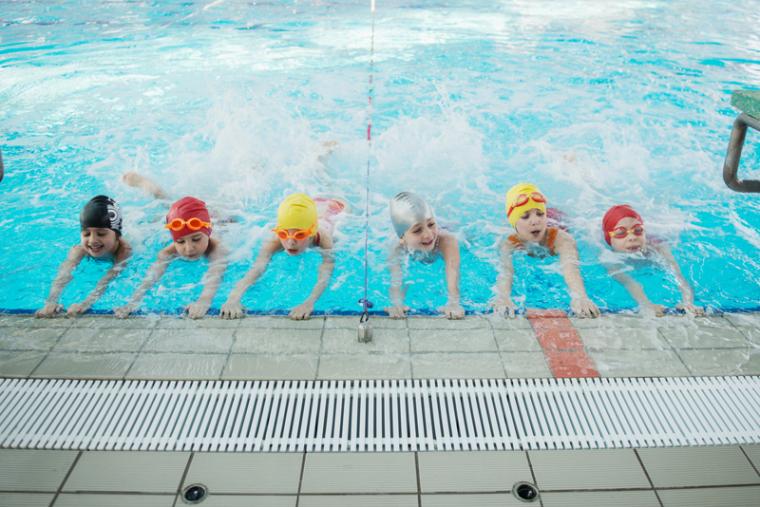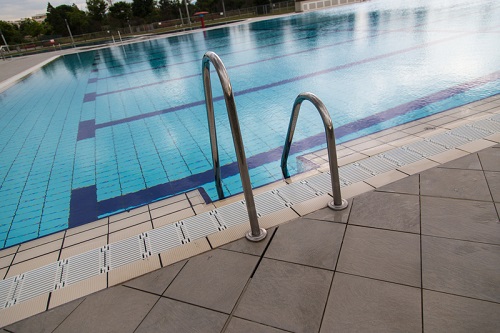
When Florida passed the Every Child a Swimmer Law in 2021, it was long overdue, considering the Sunshine State leads the nation in childhood drownings.
And while the law does not mandate swimming lessons for children as part of the P.E. curriculum, it does have some advantages: schools in the state are now held responsible for providing information to parents on the importance of learning to swim – and resources are made available to parents who are financially disadvantaged, allowing them to access swim lessons for their children.
The next step, say aquatics associations, is to take the laws nationwide, enacting them in every state.
According to Aquatics International, a coalition made up of pool and spa industry organizations, as well as other groups, is promoting exactly that agenda:
“The non-profit foundations for both the Pool & Hot Tub Alliance and the Florida Swimming Pool Association have agreed to collaborate, not only to promote legislation, but also distribute scholarships and use other means to bring swim lessons to children.”
"We are very excited about continuing to promote laws like Every Child A Swimmer," said Lucinda McRoberts, executive director of the USA Swimming Foundation. "But passing legislation is not the end of the journey. It's going to take a lot of steps, and it's going to take those steps being taken nationwide. Simply put, drowning is a leading cause of death for children. Formal swimming lessons reduce the likelihood of childhood drowning by 88 percent. Parents and guardians must be made aware of the risk and how and where they can mitigate it. Florida’s Every Child a Swimmer law does exactly that, and we are working diligently to ensure more states follow their lead."
So far, the law is off to a running start; Louisiana just approved a requirement that public schools offer water safety training to children in grades K-12.
There has been an increasing amount of attention given to the fact that children in ethnic minorities are even less likely to learn to swim. BBC News quoted a statistic from the CDC, noting that the fatal drowning rate of African-American children aged five-14 is three times that of white children.
 In the same article, USA Swimming stated that “just under 70 percent of African-American children surveyed said they had no or low ability to swim. Low ability merely meant they were able to splash around in the shallow end. A further 12 percent said they could swim but had ‘taught themselves’ (picture every lifeguard shuddering at that phrase). The study also found 58 percent of Hispanic children had no or low swimming ability. (For white children, the figure was only significantly lower – 42 percent – but still far too high, according to officials in all organizations).”
In the same article, USA Swimming stated that “just under 70 percent of African-American children surveyed said they had no or low ability to swim. Low ability merely meant they were able to splash around in the shallow end. A further 12 percent said they could swim but had ‘taught themselves’ (picture every lifeguard shuddering at that phrase). The study also found 58 percent of Hispanic children had no or low swimming ability. (For white children, the figure was only significantly lower – 42 percent – but still far too high, according to officials in all organizations).”
The nationwide lifeguard shortage isn’t helping. ABC News reports that the American Lifeguard Association estimates the shortage impacts one-third of U.S. pools. Bernard J. Fisher II, director of health and safety at the association, expects that to grow to half of all pools by August, when many teenage lifeguards return to school.
“It is a disaster,” Fisher said.
As a result of the shortage, some pools have been going without lifeguards, and others have closed. Neither scenario is desirable in a population that lacks swimming skills. In areas where pools are closed, for example, children (including those with low or no swimming skills) often begin heading for reservoirs, ponds and other areas – including sneaking into residential pools when the owners aren’t home. The risks are enormous and they just keep getting higher.
Swimming, in addition to being a life skill (and a life preserving skill), is an aspirational sport; however, in the past, the vast majority of swimmers representing the USA in the Olympics have been white. Swimming organizations have noted that part of creating incentives for minorities to swim is having role models with whom they can identify. Another goal of USA Swimming, putting more potential talent into the pipeline, relies heavily on getting children started swimming early.
But, says McRoberts, it's not the end goal; preventing drowning is the top priority.
"If a child who learns to swim goes on to develop a passion for the sport, that is just the cherry on top for us. Our primary focus in promoting legislative solutions is ensuring swimming is accessible to all as a lifesaving skill."
But even outside the Olympic program, there are undeniable advantages to mandating water safety awareness. Unfortunately, it may be a hard sell, considering the history of similar efforts in the past:
- In 2010, South Carolina introduced a measure requiring any state-funded school within 10 miles of a public pool to offer free swimming instruction to all students. Under AB 3030, students would be required to complete two years of swim education before graduating from high school.
- In 2015, Minnesota lawmakers tried to push through a measure requiring the commissioner of education to develop swim resources statewide.
- In 2020, Ohio State Senator Theresa Gavarone, R-Bowling Green, introduced legislation to ensure children would have access to swim lessons.
None of these measures made it to law; through the years, other states and other jurisdictions have floated similar concepts; however, all languished on the drawing board because of two schools of thought: first, the belief that it was up to parents to teach their children to swim (or make sure they took lessons); and second, an objection to the overall cost of implementing learn-to-swim programs in schools, particularly schools without easy access to pools during the school year.
The reason for the success in moving Every Child a Swimmer from bill to law in Florida is its relatively low cost of implementation; providing parents with information on the importance of swimming lessons is far less expensive – though decidedly less direct – than mandating swimming lessons. (It also places responsibility on parents’ shoulders; once the school has provided the information, the rest is up to parents or guardians to follow through).
"Mandates are not popular things in legislatures," adds McRoberts, "and some states are unable to regulate curriculum but they can require that parents are provided the information." She notes that the organization would like to capture information from successful campaigns in other states and create model legislation that could be distributed to leaders in all other states that currently lack such laws.
And, notes Thurman Thomas, who is co-founder of Tankproof in Louisiana, legislation can accommodate all levels of budgetary and logistical concerns.
“To learn about water safety can be done with simple conversations. Dos and don’ts in a classroom and in any kind of setting. People think just because you own a pool, you don’t own a pool, maybe go to the beach, maybe go to the river, to a lake…water safety starts on the land, and these are things every child should know,” he told reporters.
At the time Every Child a Swimmer passed into law in Florida, PoolProMag quoted Dominic Calabro, Florida TaxWatch president and CEO, on the high cost of drowning – and found that occasionally, cost savings may extend in directions not originally considered.
“Florida leads the United States in unintentional drowning deaths for children ages 0-4, and the drowning rate for children ages 5-12 has increased significantly over the last decade,” Calabro noted. “While the lasting emotional impact of those losses is unimaginable and should not be downplayed, the economic consequences are also surprisingly severe. In fact, if all of the 298 drowning deaths that occurred among children five and younger from 2017-2019 — just two years — could have been avoided, the economic risk reduction would be between $3.1-$7.8 billion.”
Drowning, says McRoberts, is anathema to USA Swimming.
"We’re going to come at this from tom to bottom, and from left to right, to try to reduce the incidence of drowning across the board."

